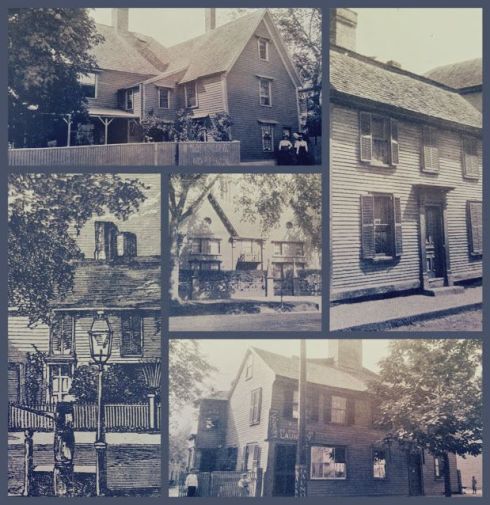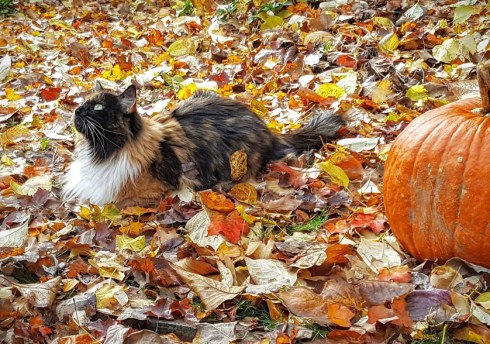We are now in the midst of Salem’s annual Haunted Happenings celebration, marking the fortuitous link between the tragic events of 1692 and that second-most festive of holidays, Halloween. I think this year’s festivities began sometime in September, and the calendar is packed through October 31: tonight is the annual parade, which used to be the kick-off event event but is now late to the party. As long-time readers of this blog will know, I’ve never been able to see the connection between innocent victims and festivity, but believe me, I’m in the minority, and the majority definitely rules on this matter in Salem. I was going to skip my annual rant this year because it is getting tiresome (for me as well as others, I’m sure) but this was a big year for witch-trial remembrance connected to the observance of the 325th anniversary of the Trials, and I heard several things in its course that I just can’t forget, so I thought I’d use this post to process a few anecdotes. Readers and followers of the blog have increased by quite a bit over the past year (for which I am very grateful!) so I also want to offer these new viewers some orientation: even though my blog is called streets of Salem, this is not the place to go for event listings and coverage of all the things going on in the streets of Salem in October–you should click over to Destination Salem or Creative Salem if that is what you are seeking. These are both very comprehensive and informative sites that serve as great guides to Salem happenings in October or throughout the year (because a lot does happen throughout the year). I cannot be your October guide because I will be either hiding in my house or getting out of town. Well, obviously that is an exaggeration: I must work after all, I will sneak out on mid-week mornings because Salem is very beautiful at this time of year, and there are several cultural events happening this month that I don’t want to miss. But after my re- and full immersion into the experience of Haunted Happenings a few years ago, I realized that I needed to keep my head down and my mind on the victims of 1692—or anything else.
So before I leave this subject for another year, here are the assertions which I have been contemplating ever since I first heard them. I know; I am a bad historian to utilize only anecdotal evidence, but this is a blog, not a book. These moments have lasted with me because I think they speak volumes.
Cotton Mather promoted Wonders of the Invisible World in the London papers. This fact (Mather’s publisher did put a notice for Wonders in several London papers in December 1692 and February 1693) was uttered by the executive director of Salem’s “Most Visited Museum” and a major beneficiary of Haunted Happenings, the Witch Museum, in the context of a panel discussion on the Proctor’s Ledge site in July of this year. There was a general discussion of how the Trials had became sensationalized over time, and this was her response, meaning, in essence, it began then–we’re not first. I thought it was rather astonishing to hear Cotton Mather, the contemporary apologist for the trials, used as a role model!
 Cotton Mather and the Witch of Endor, by the extraordinary and eccentric Salem artist Quinton Oliver Jones (1903-1999), who is currently the subject of an exhibition at the Salem Athenaeum.
Cotton Mather and the Witch of Endor, by the extraordinary and eccentric Salem artist Quinton Oliver Jones (1903-1999), who is currently the subject of an exhibition at the Salem Athenaeum.
I have no doubt Elizabeth Montgomery the person would have spoken out against injustice in 1692, had she been here at the time. And her character, Samantha, DID just that ! This was a comment in response to a letter in the Salem News (not by me!) in opposition to the Bewitched statue, essentially asking why this statue of a fictional television character was located in Salem. Apparently the statue is not of Samantha Stevens, but Elizabeth Montgomery, who was an advocate for social justice….but nevertheless Samantha did stand up! What can you say in response to such thinking? Does real history even exist?
 I must be honest: this a THANKSGIVING episode of Bewitched; I couldn’t find an image of Samantha at the Witch Trials so Plymouth had to stand in–but Puritans are Puritans, right?
I must be honest: this a THANKSGIVING episode of Bewitched; I couldn’t find an image of Samantha at the Witch Trials so Plymouth had to stand in–but Puritans are Puritans, right?
You need a license. This happened just the other day: one of my colleagues, who is teaching a First Year Seminar (required for all freshmen at our university) on “Hamilton and Salem” took his students on a walking tour of Salem so that they could learn about, you know, Hamilton and Salem. Standing in front of old Custom House on Central Street and explaining what the (then-waterfront) looked like in 1800 when Hamilton did in fact visit Salem, a man came up to him and asked him which tour company he worked for. When my colleague replied that he was a history professor at Salem State taking his students on a walking tour, the man replied: you can’t do that; you need a license (and stop blocking the sidewalk). My colleague (with a Ph.D., two books, and 15+ years of teaching under his belt) didn’t quite grasp that this man was trying to get him to stop teaching, so the man repeated himself, assertively: Stop. You need a license.
 No teaching here!
No teaching here!
The commodification of history has its costs. No doubt there are benefits too: the official line is that Haunted Happenings revenues offset taxes and many downtown businesses report that the Halloween season is the time when balance sheets move from red into the black. We hear about the benefits of Haunted Happenings a lot, but never about the costs, literal or otherwise. I can’t speak to the former, but in reference to my anecdotes I see: a declining historical empathy, a declining historical understanding, and…..increasing restrictions on free speech? (perhaps this is going too far but I find the last anecdote simply chilling, though I was relieved to read that unlicensed teaching is actually allowed in Salem). Certainly our ability to engage in a meaningful dialogue is limited by the constraints of official boosterism when questioning public policy is interpreted solely and simply as threatening private livelihoods and the collective refrain is embrace or retreat, love it or leave it–and stop whining.



 A joyful walk down Federal Street yesterday (Salem IS beautiful at this time of the year–do come during the week, if you can)–but then I went downtown and saw that the Museum Place Mall has been renamed the Witch City Mall.
A joyful walk down Federal Street yesterday (Salem IS beautiful at this time of the year–do come during the week, if you can)–but then I went downtown and saw that the Museum Place Mall has been renamed the Witch City Mall.
Like this:
Like Loading...


















 The two memorials: Proctor’s Ledge this summer; downtown in October 2015.
The two memorials: Proctor’s Ledge this summer; downtown in October 2015.























 Just one weekend in Salem: The Salem Award Foundation’s 25th Anniversary Celebration and Salem’s Trials Symposium. Below, the Witch Trials Memorial off Charter Street, yesterday: for much less contemplative times, click
Just one weekend in Salem: The Salem Award Foundation’s 25th Anniversary Celebration and Salem’s Trials Symposium. Below, the Witch Trials Memorial off Charter Street, yesterday: for much less contemplative times, click 








 Photographs by Nina Leen taken on August 8, 1949 for the September 26 issue of Life magazine, ©Time, Inc.
Photographs by Nina Leen taken on August 8, 1949 for the September 26 issue of Life magazine, ©Time, Inc.





























